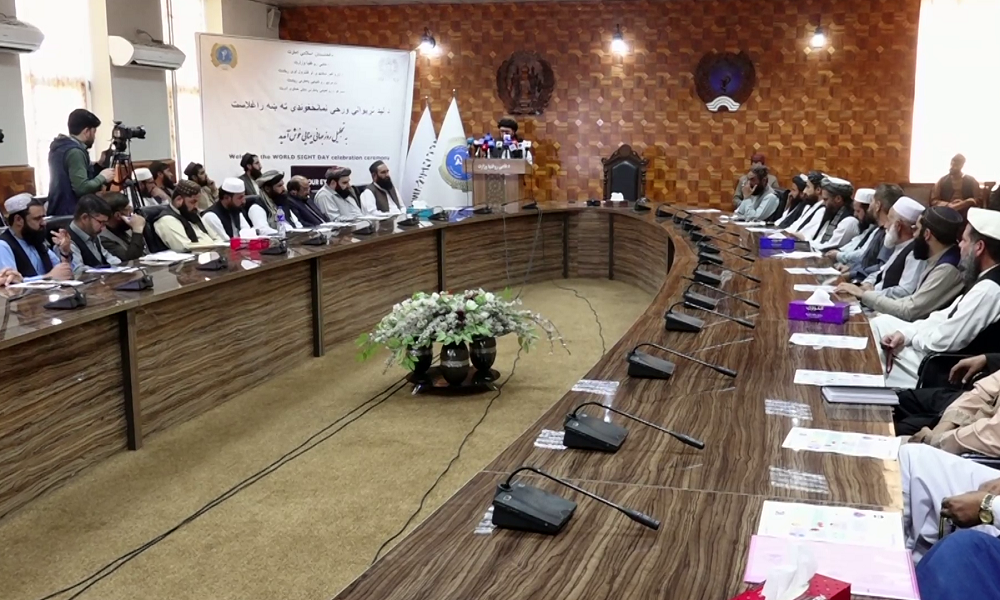Health
Majority of Afghans with mental disorders are women: officials

Based on last year's data, 52 percent of people with mental disorders in Afghanistan are women, the Ministry of Public Health said.
However, after the Islamic Emirate took over the country and with the improvement of nationwide security and the provision of better health services, mental disorders have decreased, the ministry said.
“Overall, the mental security of men and women in Afghanistan is not ensured and their mental security is disturbed. According to the figures shared with us, in 2023, 52 percent of the visitors for mental disorders were women,” said Sharaft Zaman Amarkhil, the spokesperson of the Ministry of Public Health.
“Generally speaking, we can say that compared to the past, the instances of mental illnesses have decreased,” he added.
People suffering mental disorders mostly refuse to share their problem, willingly or unwillingly.
“There are many problems at home; We are poor. I finished school, but didn't find any job,” Ansar, a mentally ill person, said.
According to the World Health Organization (WHO), half of Afghanistan’s population suffers from mental distress.
Factors such as unemployment, poverty, domestic violence, ban on girls’ and women’s education and work, and drugs are said to be key contributors to mental distress.
Health
Smartphone addiction and nomophobia widespread among Afghans, study says
The findings show that men experience moderate to severe nomophobia (93%) slightly more than women (88%), challenging previous studies that suggested differing vulnerabilities based on gender.

The level of smartphone addiction is widespread among Afghans who exhibit symptoms of nomophobia, the fear and anxiety of being without a mobile phone, the UK-based University of Surrey said in a study report released on Thursday.
The study, conducted by a team of international researchers, surveyed 754 undergraduate medical students, predominantly aged between 18 and 29 at the Kabul University of Medical Sciences.
The findings show that men experience moderate to severe nomophobia (93%) slightly more than women (88%), challenging previous studies that suggested differing vulnerabilities based on gender.
According to the report, 54% of the participants reported moderate nomophobia, while 35% exhibited severe symptoms.
"The overwhelming prevalence of nomophobia among Afghan students is not just a personal issue for the individuals; it is a reflection of the socio-political crisis in Afghanistan,” said Suleman Lazarus, lead author of the study and cybercrime expert at the University of Surrey. "In a nation where communication and connection are increasingly restricted, the smartphone becomes a lifeline, leading to heightened dependence and anxiety when separated from it."
The study also highlights the impact of marital status on nomophobia levels, with married individuals showing higher mean scores compared to their single counterparts. This unexpected finding suggests that the dynamics of personal relationships and societal expectations in Afghanistan play a significant role in shaping individuals' experiences of anxiety related to smartphone use, according to the report.
The research presents a unique lens through which to view the intersection of technology, mental health, and socio-political context in Afghanistan. With a mere 18.4% of the population actually having access to the internet, combined with a stark gender divide in access to technology itself, understanding nomophobia in this landscape is crucial for addressing mental health and societal well-being, it said.
“This study is a crucial step toward understanding the mental health implications of our technology-dependent society, particularly in regions where access to education and basic rights is severely restricted. The data we have gathered paints a vivid picture of the psychological landscape of Afghanistan today,” Lazarus said.
Health
Health Ministry marks World Sight Day, says 25,000 people in Afghanistan go blind each year

The Ministry of Public Health says nearly 25,000 people in the country lose their sight every year.
Marking World Sight Day on Thursday in Kabul, health officials said that 1.5 million people contract eye diseases every year.
The ministry officials added that many people in remote areas suffer from eye diseases.
“Nearly 1.5 million people suffer from visual impairment every year. In Afghanistan, about 25,000 people lose their sight every year,” said Abdul Wali Haqqani, Deputy Minister of Public Health.
“In the world, more than two billion people are visually impaired,” said Naimullah Safi, representative of the World Health Organization.
According to health officials, since the beginning of this year, nearly 4,000 eye operations have been performed in various provinces.
Meanwhile, Afghanistan is also facing a shortage of ophthalmologists. There are only 300 specialists registered in the country, but not all are practicing ophthalmologists. Many have retired, while others have left the country.
Health
Afghanistan’s health ministry convenes urgent meeting on disease outbreak in Parwan
Haqqani ordered specialized health teams to be deployed to the affected area and ordered a follow up meeting to be convened with World Health Organization representatives and other health partners.

The Islamic Emirate of Afghanistan (IEA) called an urgent meeting Sunday of senior health-care officials to address the outbreak of acute diarrhea in the Kafshan Valley of Ghurbund district in Parwan province.
This comes after concerns were raised last week by Parwan officials who confirmed that over 500 people had come down with a mystery illness.
Hekmatullah Shamim, the governor’s spokesman, said the affected people had all fallen ill over four-days.
The IEA’s Ministry of Health sent officials to the affected area and blood samples were taken from patients for analysis.
In a statement issued Sunday by the ministry, the deputy minister for health services Mawlawi Abdulwali Haqqani called the meeting, which was attended by central directors from the ministry, representatives from the infectious disease hospital and other experts.
Haqqani ordered specialized health teams to be deployed to the affected area and ordered a follow up meeting to be convened with World Health Organization representatives and other health partners.
The teams deployed to the area will focus on raising public awareness, assessing the health status of patients, and ensuring the provision of comprehensive medical facilities for both patients and local residents.
“These efforts are critical to facilitate urgent interventions necessary to mitigate the outbreak,” the statement read.
According to the World Health Organization (WHO), Afghanistan is grappling with significant health challenges marked by a fragile healthcare system and unequal access to services, particularly in rural areas.
In their latest report published last week, the Health Cluster Afghanistan Bulletin for August 2024, the WHO said there is a looming threat of disease outbreaks, including acute watery diarrhea (AWD), measles, Crimean Congo Hemorrhagic Fever (CCHF), dengue fever, COVID-19, pertussis (whooping cough), and malaria.
In August 2024, a total of 402,920 cases of acute diarrheal disease were reported, representing 14.6 percent of total consultations.
Out of the total acute diarrheal disease cases, 23,801 new AWD, with dehydration, cases were reported in August, resulting in 10 deaths.
So far this year, total of 125,471 AWD cases with dehydration and 60 associated deaths were reported, the WHO report stated.
-

 Sport5 days ago
Sport5 days agoAfghanistan A beat Hong Kong by 7 wickets in tri-series
-

 Latest News5 days ago
Latest News5 days agoBadakhshan governor says hundreds of kilometers of roads repaired and paved in past year
-

 Regional4 days ago
Regional4 days agoPakistan capital in lockdown ahead of regional leaders’ meeting
-

 Latest News2 days ago
Latest News2 days agoIranian forces accused of killing over 250 Afghan migrants at border
-

 Sport4 days ago
Sport4 days agoRasooli hits ton as Afghanistan A defeat Oman by 44 runs in tri-series
-

 Latest News5 days ago
Latest News5 days agoAfghanistan not invited to SCO summit
-

 Latest News3 days ago
Latest News3 days agoPakistan seizes large cache of US-made weapons at border with Afghanistan
-

 Regional5 days ago
Regional5 days agoUS officials believe Israel will target military and energy sites in Iran
























